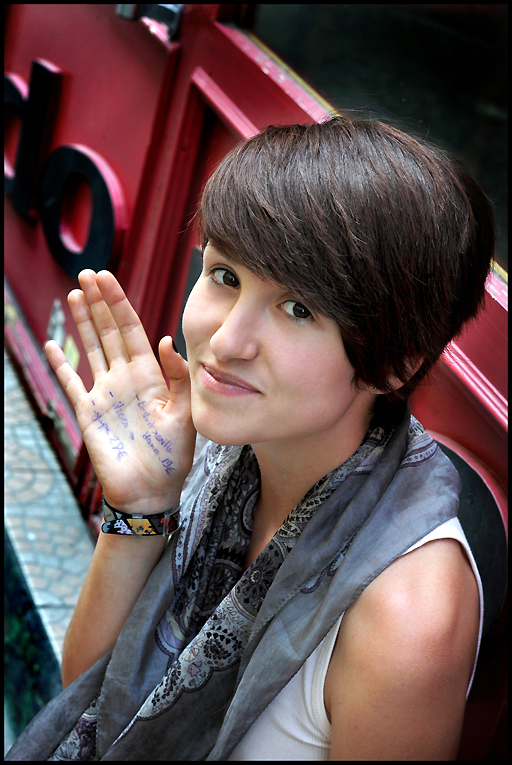
Leaving the world of intelligent, well-crafted comedy behind us forever, we come to Meatballs Part II. The world never really needed a Meatballs sequel, let alone a franchise, and indeed every single one of the original filmmakers seemed to agree, parlaying their modest Meatballs momentum to create classic golf comedies and incredible ghost-busting blockbuster bonanzas. But even when a sequel is not forthcoming, the great rip off machine can swoop in to fill that void with so many cheapo knockoffs, diluting the charm of the original rather quickly.
Seeing as it was the early 80s, the same years that saw countless “murderer at the camp” movies to diminishing returns, it makes perfect sense that a similar vein of “camp without the murderer element” movies would also chug along, to hardly anyone’s interest. Damned if I know what all of these movies were, I don’t care! And in the five years between Meatballs and Meatballs Part II, quality and even comprehensibility went bye-bye pretty quickly.
Now, Meatballs Part II was not initially intended to be a part of the hallowed Meatballs family; rather, it was simply another innocuous, vacant knockoff, soon to be rightly forgotten. But an interesting thing happened in 1984. No, not the rise of a totalitarian government hell bent on reducing people’s liberties (unless you really disliked Reagan). No, I mean the rights to Meatballs switched. Perhaps Meatballs’ independent Canadian production history made it easier pickings, but the fact is that now a particular anonymously crappy summer camp sex comedy could trade in on the Meatballs name, for whatever it was worth. And there’s hardly anything in Meatballs Part II – apart from that non sequitur title and the broad summer camp plot elements that define subgenre more than franchise – that connects it back to the original Meatballs.
Trading in the talented Ivan Reitman, Meatballs Part II was helmed by Ken Wiederhorn, director of…practically nothing else…mostly some TV episodes. Just as unpromisingly, the screenwriters were Martin Kitrosser and Carol Watson, who – Wait, what was that deep, distant rumbling? Oh…no…These two wankers were the worst writers in the entire Friday the 13th franchise, not a good sign…Why do I know that offhand?! I didn’t even have to check the Internet for that one.
The opening credits play over a traveling school bus, credits written in a bright, neon 80s font I mostly associate with era magazines such as Nintendo Power. The second name credit is one Hamilton Camp, and excuse me for momentarily thinking this was an on-screen location title. Then we move into the bus, and – Holy crap! Pee Wee’s driving that bus! If only the bus were one of his anthropomorphic buddies, able to comment on the already-obvious suckiness.
For this bus is filled with our central CIT characters for this entry, a stark contrast to the naturalist members of the first movie. For this is turning out to be precisely the type of film I praised the original Meatballs for not being, full of Hollywood teenagers, their blatantly scripted problems, and flat, TV-quality lighting depicting all this. These characters, whose names won’t be uttered until it’s long past my convenience, include a slut (Tammy Taylor), an innocent girl (Kim Richards), a token tough guy from “Joisey” (Ralph Seymour), a different kind of slut (Misty Rowe, bra obviously padded), and a blandly horny guy (Archie Hahn). There is also Flash (John Mengatti), the leather-clad greaser type of guy who is, I’m convinced, purely an invention of the movies. The police pull Pee Wee’s bus over to usher Flash from their custody to the camp’s – this “passing the bill” arrangement isn’t something that’s worth a single extra moment’s thought contemplating. So basically, all these characters are pretty much the same types you’d find in a terrible slasher movie (recall the screenwriters), only here there isn’t the comfort in knowing most of them are going to die horribly for your amusement at some stage. For viewers, this is actually the more nihilistic experience!
Soon the bus arrives at Camp Sasquatch, nestled in the cheap and budget-conscious mountains surrounding Los Angeles – I’ve spend years of my life working in these very mountains, yet they still look awful in movies. What a change from the lush Canadian scenery in the real Meatballs. Here we become aware of this movie’s other character types, namely the grotesque, lazy cartoons. This starts with an old man who’s supposed to be the head counselor, camp owner, and whatever other position of camp authority they could think off. This is Giddy (Richard Mulligan, a poor man’s Lloyd Bridges, himself a poor man’s Leslie Nielsen), introduced to one Tommy McBee (actor unimportant), a young kid in an unrealistically souped-up wheelchair. Their “clever” dialogue endlessly reasserts that something is “Not unfunny,” a line that isn’t not inaccurate.
For some reason, all the movie’s central young boys (and they are all young boys, causing me to worry about Ken Wiederhorn) count among the grotesques. We have two identical twins, an excuse for some profoundly unfunny sub-Abbott and Costello routines. There’s the aforementioned wheelchair-bound Tommy. And then there’s Tim, whose arbitrary, off-putting character trait is that he constantly lugs around either a stuffed skunk or armadillo…Okay then. There’s also a kid who sells candy bars, and then loses any distinguishing features whatsoever promptly thereafter.
With all these grotesques, and awkward dialogue that struggles with humor like an English-language-learner, it becomes clear that this film’s preoccupation is “komedy.” It’s anxious, eager-to-please, and really, really, really overeager. It’s like these jerks saw Airplane! and chose to mimic its tone, but somehow traded in its world-class poker face for, well, the most obvious “tell” outside of Le Chiffre in Casino Royale.
There’s also a rival camp across the lake from Camp Sasquatch, not so much because Meatballs did it, but because Meatballs’ weak-sauce competitors did it. This is Camp Patton, a boot camp for preteens, and an opportunity for the broadest, least satirical series of military yuks I’ve ever come across. The shrimpy, Napoleonic camp leader Col. Bat Jack Hershey (the enigmatic Hamilton Camp, who certainly took to every possible meaning of his last name) provides a master class in actually out-hamming Richard Mulligan, with acting so outré it somehow rounds the horn back to being boring. His second-in-command is Lt. Felix Foxglove (John freaking Larroquette, sans dignity), and guess what offensive, broad stereotype they’ve granted him – homosexuality. The gag here is supposed to be the outrageous contrast between the military and the gays and…just make your own joke, okay.
Right, so there are unmotivated rivalries between the two camps, because this kind of movie demands it – the conflict here is noticeably more pronounced and mean-spirited than North Star and Camp Mohawk. To that end, Giddy recruits Flash, that juvenile troublemaker Rebel Without a Cause wannabe, to train for the annual climactic boxing tournament between the two camps. I die a little on the inside.
Then something happens that you’d honestly never be able to guess without prior knowledge of this movie. A – oh good God! – a…a…Okay, I can do this…A UFO hovers over the lake.
…
…
[I shriek in anger.]
Not content with somehow transforming the broad outline of Meatballs into the kind of komedy you’d find in between the sex scenes of a porno, they’ve decided to go ahead and throw in an extraterrestrial element, hurling whatever realism remained directly out the window. And it turns out, since this movie is inexplicably concerned with badly mimicking Airplane!, this is their chance to spoof E.T. – if by “spoof” you mean “retell without jokes, heart or whimsy on a restrictively tiny budget.” It seems the legally-distinct-from-E.T. alien child has been sent to a human camp by his (Jewish) alien parents, all for no good goddamn reason whatsoever. So they abandon this creature in the woods, pausing only briefly to relate a truly uninspired space pun that I’m not transcribing.
I grow bored…The quintet of broad yet uninteresting young boys soon enough discovers this alien hiding in an outhouse, affording us lengthy views of the unremarkable beast. Let’s see…His head is totally lacking in detail, no part of his face ever moves, and he simply waddles around ineptly in a way that makes Howard the Duck seem butch. He wouldn’t pass muster in a lesser creature feature from the 50s. And this alien, lovingly nicknamed “Meathead,” is absolutely the best thing about this movie. Oh look, here he is now!

Meanwhile, we leave this non-starter of an alien storyline to join the non-starter of a boxing storyline. Flash heads to the camp’s remarkably large boxing building to train with Giddy and with Boomer (Joe Nipote), an eleventh-rate sketch “komedy” troupe’s idea of a Rocky parody. It’s like a mentally challenged guy somehow failing to perform as a mentally challenged guy. It blows my mind. Oh, and this movie puts in some sort of token effort on a romantic subplot no one is concerned with, so Flash’s sparring is occasionally interrupted for long, loving glances at the innocent girl, whose name is…Shirley? Yeah, I think it’s Shirley.
She too experiences a growing attraction towards Flash (young people are dumb), so she proceeds to ask Nancy the slut about S-E-X. She endlessly asks Nancy about “dorks,” which is this movie’s oddball euphemism for the penis. Actually, they quickly segue over to an even more bizarre euphemism, “pinkies.” I’d accept this briefly, but the movie insists on its overuse rather regularly, possibly due to a combination of zero wit and a PG rating. The various other slutty female nonentities further teach Shirley about the penis, and – wait, did they say Sheryl? Okay, whatever, her name’s actually Sheryl. Damn this movie.
A few more boring gag scenes later, and we return to Camp Patton so the rivalry subplot can develop. Col. Hershey meets with Chief Rawhide – you guessed it, they’re now resorting to lazy joke versions of the Natives, a portrayal MAD Magazine wouldn’t resort to in its worst years (the 2000s). This means Hershey now has the deed to the lake (not the lands themselves, but the lake), which will somehow allow him to put an end to the hated Camp Sasquatch once and for all!
The following day, Hershey and the increasingly-outed Lt. Foxglove head over to Sasquatch to meet with Giddy. Having run out of broad cultural stereotypes that make sense in a komic kamp kontext, the movie now randomly resorts to showing off several Hara Krishnas (you know, because they were in Airplane!). Hershey learns from Giddy…something vague about the Krishnas, which prompts Hershey to enter into a weird little agreement. Basically, plot contortions in this subgenre have to make the camp’s very existence dependent upon the outcome of the climactic sports match, so indeed both Camp Patton and Camp Sasquatch risk the deeds to their respective properties on the upcoming Champ of the Lake boxing match. What little in-movie justification is given is scant and contrived, so let’s just accept this necessary turn of events and move on.
That night (or at any rate, a night, since the passage of time here is never totally clear), there is a big dance over at Camp Sasquatch – and even though it’s now 1984, disco features prominently. Ah yes, the big dance, another required element in these movies. Flash dances with the innocent girl Cheryl (I gave up and checked the Internet – that’s her character’s name), arranging through a komic konversation some sort of ribald tryst later that night. Likewise Jamie and Fanny, the perpetually sex-crazed couple, also plan a tryst. Shenanigans ensue, each male accidentally heads into the wrong cabin, and coitus sees premature interruptus.
Let’ see, which subplot has been most neglected by this point?...Ah, Meathead the alien! I almost forgot, there’s a freaking alien wandering around camp, to the complete and utter nonchalance of nearly everyone. Meathead has disguised himself in a raincoat, what he perceived to be the most common of all human outfits (he must have spent some time on 42nd Street), a non-disguise on a par with Clark Kent’s glasses. Strolling aimlessly, Meathead phases through a wall into Flash’s cabin, to find this ex-con camp counselor enjoying delicious, PG-rated marijuana. Meathead tries a little, floats briefly (these are the jokes here, people!), and I grow bored, bored, bored, bored, bored!
They’re pretty much completely running out of material, because next up we get to see the camp children sitting around watching director Wiederhorn’s only other movie, the comparatively adequate Shock Waves. Flash arranges a skinny dipping session with Shir- wait, Cheryl, made possible because this girl is so innocent she believes “skinny dipping” means “astronomy.” It’s a joke, boy, you’re supposed to laugh, now, y’hear? [Sigh.] So these two head out to the lake, while the various slutty girls secretly follow to catch a glimpse of Flash’s “pinky.” At the same time, the militaristic kids from Patton have crossed the lake for a mostly pointless incursion into Camp Sasquatch. Also, Jamie and Fanny are having sex in the forest, a normal state of affairs (they’d have died three minutes into a horror movie). Then a bear comes along, and all these different plot strands descend into “komic” anarchy, everyone simply racing around and screaming like a bad Benny Hill routine – that is to say, any Benny Hill routine. The end result, the scant little event that ties this unfunny sequence in to the movie’s semblance of a plot, is that the Patton kids kidnap Flash and drag him back to their camp.
And with a full half hour of running time left, it’s time for the Champ of the Lake, meaning we’re due in for a deathless, overly-long boxing match. The entire cast is assembled, many of them vainly and pointlessly crossing their eyes in a wildly misguided attempt to eke a little laughter out of the audience…I dunno, maybe this movie would be funny to stoners. Then again, shoes are funny to stoners. It’s like convincing a teenager to have an erection…Okay, I’ve gotten sidetracked here. I think I don’t want to talk about this movie.
Flash awakes alone over at Camp Patton, totally not locked up or anything, so he can simply wander over to Camp Sasquatch and fight anyway. Nice job with your villainous plan there, Hershey. But Flash is basically naked, in a PG sorta way (skinny dipping and all), so he has to find something to wear. Apparently the only clothes at Camp Patton are the dresses Lt. Foxglove keeps in his closet, never to come out. What a lame, lame, lame way to get your ostensible hero in a dress for the final fight – and then do nothing with that gag once it’s been set up. Again, way to suck, movie.
Hershey releases his feral, raw meat-eating boxer from his cage, revealing Mad Dog (Donald Gibb, stalwart member of the Revenge of the Nerds saga). Then Flash makes his glorious, dress-clad entrance, and the fight is on! Two rounds of the most lackluster fight choreography ever proceed, and the movie is inept enough it can’t even convince us of Mad Dog’s mastery over Flash, a necessary development for any climactic movie fight. They even attempt to retell a comic routine Charlie Chaplin once mastered, and naturally the execution here is botched. Man, there’s nothing quite like trying to write about a bad comedy, is there?
Finally, Meathead gets it into his expressionless alien head to aid Flash, so he goes ahead and uses his red-eyed stoner alien powers to levitate Flash over the ring (on visible wires). Flash floats abou,t landing blow after blow on the stymied Mad Dog, all the while the whole camp reacts with zero emotion to this bizarre, idiotic turn of events. We’ve come a long way from the original Meatballs, I tell you what, so I just keep repeating Bill Murray’s mantra to myself: “It just doesn’t matter!”
Man, this boxing match is taking forever. Hershey alone somehow realizes there is a red-eyed, telepathic alien seated in the crowded bleachers, so he proceeds to do what any of us would and prime a grenade underneath dozens of children. I – Whuh?! Wheelchair-bound Tommy attempts to stop Hershey by walking out of his wheelchair, even though he could have easily wheeled over to the man. But that doesn’t matter (thank you, Bill), so instead Meathead decides to levitate the grenade around, which then chases Hershey out of the building. It explodes him off screen, and because this is the type of movie it is, we know Hershey shall turn up again at the end, simply charred a little bit like Daffy Duck.
Flash tumbles to the ring, Meathead’s telepathic stoner link now broken, so he just proceeds to easily whup Mad Dog right there on his own, you know, just because. It just doesn’t matter! Camp Sasquatch is saved, everyone cheers, and Mad Dog responds to his loss by tearing off Flash’s clothes. Hence his “pinky” dangles out for all the preteen children in attendance to gawp at in horror.
The movie has climaxed, all its plot strands meshing together like an intricate Chinese puzzle box in one glorious penis exhibition. All that’s left is the standard wrapping up, which takes forever. End. Giddy resolves the land deeds with Hershey. End! Meathead’s parents pick him up and act quite the Jews. Eeeend! The buses full of kids leave for wherever, while Flash smooches Cheryl. The camera promptly pans back, so this is the end, right? Thank you, sweet J- Wait, we’re in space now?! Aah! Meathead’s UFO flies around and…Okay, whatever, it’s over, let us never speak of this movie again.
This terrible PG-rated movie, so insulting even to anyone old enough for PG fare, originally aimed for an R, to be a part of the cheesecake teenaged sex comedy genre Meatballs itself was so distinctly not a part of. According to legend (that is, the IMDb trivia page), over 80 minutes of naked sex footage was shot for the international market, removed only when the actors who performed these softcore scenes took offense to their inclusion. Wait, why’d you take part in a whole film’s worth of intercourse if you didn’t want anyone to watch it? So be it, someone actually took the effort to list in great detail every single sex act we missed. You don’t have to read through this whole thing, oh Lord no, but seriously go and check it out!
Meatballs Part II “enjoys” a miserly 3.0 rating on the IMDb, which still somehow makes this the second highest entry in the Meatballs franchise. Boy, these next two are gonna be some real turds!
Related posts:
• No. 1 Meatballs (1979)
• No. 3 Meatballs III (1986)
• No. 4 Meatballs 4 (1992)

































